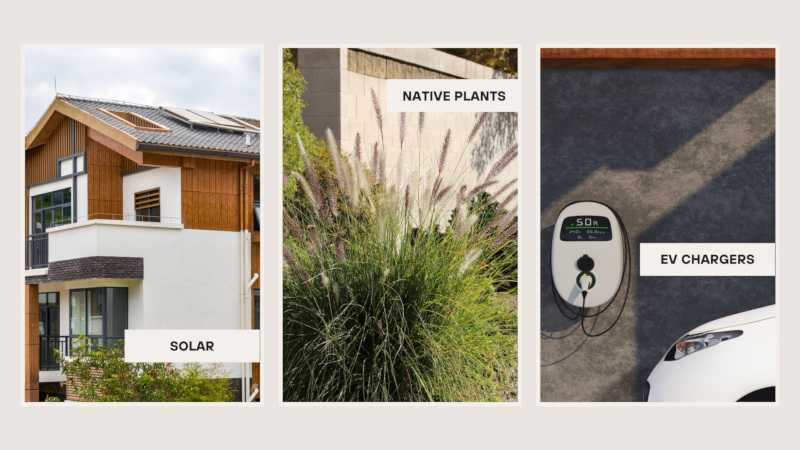Summer is almost here. That means warmer weather, more water usage for landscaping, and higher utility bills if you have an AC system. With concerns about climate change and high energy bills, many homeowners are looking for green alternatives. Solar panels and native, drought-resistant plants come to mind. But what if you live in a home governed by a homeowners association?
Some might ask, “What is a Homeowners Association and why do they matter?”
As suburbs expanded, residential developers saw an opportunity to create entire subdivisions that would share amenities and common spaces. If the community were designed to maintain their own roads, they could even be gated and up their appeal of exclusivity. In either case, to ensure the longevity of these planned communities, rules needed to be established. That meant a governing body was needed in the form of a homeowners association (HOA).
How common are Homeowners Associations in Marin?
According to the California Association of Community Managers, Marin County boasts:
HOAs totaling: 547
The average number of homes in each HOA: 63
The aggregate number of homes in all HOAs (estimated): 34,000
The estimated number of county residents living in HOAs: 81,940
The average age of HOAs (estimated): 21 years
A well-known coastal community that implemented strict rules and regulations for their subdivision is Sea Ranch, in Sonoma County, where uniformity reigns right down to the type of roofs allowed. However, the developers were forward-thinking and promoted the idea of what was then referred to as sod roofs, now called living roofs. True to their overall promotion of green living, the Sea Ranch Homeowners Association allowed solar energy options on homes early on. This is not true of all homeowners associations.
California’s Solar Rights Act
However, California passed a 1978 law called the Solar Rights Act. According to a publication of the Energy Policy Initiatives Center, “The Act limits the ability of covenants, conditions, and restrictions, (hereinafter “CC&Rs”) typically enforced by homeowner associations (hereinafter “HOAs”), and local governments to restrict solar installations.” (
That was good news for anyone living under the rules of their HOA. But it does not mean you have free rein to make decisions without your HOA interfering. Take the case of a homeowner in Kentfield in 2014, decades after the Solar Rights Act became law. Her HOA objected to the color of the panels she chose. Don’t assume getting solar panels will be a slam dunk.
Tom Cosgrove, a solar consultant with Powur Solar and Timberline Solar cautions that a homeowner needs to understand who owns the roof on their home if they belong to an HOA. He said, “Condos and townhouses that are attached present an issue because most often the entire outside of all the buildings, the outer walls, and roofs are owned by the HOA. It is easier with single-family homes in a development with an HOA. There may be greater flexibility. In both cases, homeowners should check with their association first.”
Cosgrove also notes that HOAs are influenced by the people serving on their boards. As a rule, he hasn’t found many that actually promote solar. He added, “I do see interest from HOA boards looking for solar solutions for their common areas, like near a community pool, or tennis or basketball court and for a community meeting room.”
Lanscaping Considerations
Expanding green options to landscaping provides even greater challenges. Hit hard by several years of drought, giving up lawns has become a serious option. In many states, if you live in a development with an HOA, you may have to revisit the rules and present your landscaping plans to your HOA board for review and wait for approval.
A recent article in the Washington Post detailed a number of difficulties homeowners are experiencing in various places in the US. However, the most surprising fact was contained in this sentence, “While HOAs were once a rarity, 84 percent of newly built single-family homes sold in 2022 were part of one, according to the U.S. Census Bureau.”
We have an easier time of it in California with HOAs. In addition to the Solar Power Act, we have protections for homeowners regarding whether or not they water their landscaping during drought periods. In fact, many homeowners removed and replaced their conventional lawns with drought-resistant plants during the drought. HOAs were prevented from making homeowners remove the new water-wise plants once the much-needed rains came.
Other states are starting to catch on and pass similar legislation that overrides years of restrictive HOA CC&Rs, allowing homeowners more flexibility when exploring green alternatives, including gardens and EV Chargers.
If you are exploring green options and want to discuss your ideas, AplosGroup can help.


